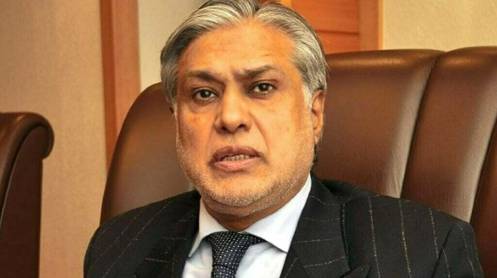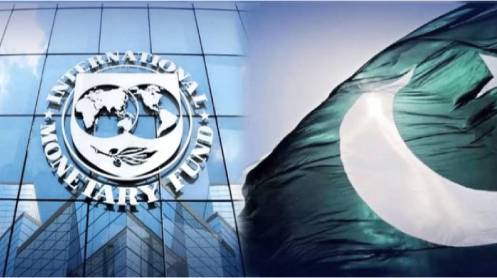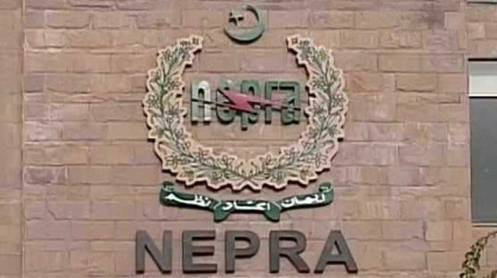ISLAMABAD: Pakistan has shared with the International Monetary Fund (IMF) a plan for containing gas sector circular debt (CD) estimated to have risen to Rs1.6 trillion.
“The proposed plan is a mix of non-cash book adjustments and tariff rationalisation that could be implemented only after the concurrence of the IMF”, said a government official, adding that the plan was subject to change with input from the IMF and the World Bank and its implementation would be gradual over a couple of quarters of the current year.
The plan was finalised on Aug 4 at a meeting presided over by former finance minister Ishaq Dar and subsequently shared with the fund. It seeks to bring sustainability to the energy sector through a reduction in the circular debt in the gas sector and help improve the country’s macroeconomic indicators and enhance economic growth.
Under the draft plan, the federal government would be injecting about Rs414bn of funds into the Sui Northern and Sui Southern gas companies through supplementary grants for payment of outstanding dues to gas producers – Oil & Gas Development Company Ltd (OGDCL), Pakistan Petroleum Ltd (PPL) and Govt Holdings Pvt Ltd (GHPL).
Book adjustments and Rs414 billion injection would bring down debt by Rs543bn
Out of these funds, SNGPL and SSGCL would clear outstanding liabilities of about Rs225bn to OGDCL, Rs62bn to PPL and Rs127bn to GHPL. On top of these, OGDCL and PPL would arrange about Rs56bn on their own and partially liquidate some of the investment bonds.
In return, the three recipients — OGDCL, PPL and GHPL — would then provide to the federal government about Rs475bn dividends on their retained earnings, estimated to be around Rs1.44 trillion as of June 30, 2022. The government currently holds 100pc stakes in GHPL, 85pc in OGDCL and 75pc in PPL.
As an overall outcome of this book adjustment under which the government injects Rs414bn and gets back Rs475bn in dividend income, the overall gas sector circular debt would be cleaned to the extent of about Rs543bn.
The Rs225bn second part of the plan is the implementation of determinations of the Oil & Gas Regulatory Authority (Ogra) for increasing gas rates by about 45-50pc. Ogra forwarded its determinations to the government on June 2 to meet the revenue requirements of the SSGCL and SNGPL for 2023-24. Instead of its notification within 40 days as required under the Ogra law, the PDM government, however, withheld its implementation.
In two separate determinations about the revenue requirement of the two companies, Ogra has asked the government to increase with effect from July 1, 2023 the average sale rate for SNGPL by 50pc or Rs415 per million British thermal unit (mmBtu) to Rs1,239 per unit. Similarly, the regulator also worked out 45pc increase in average gas rates for SSGCL to Rs1,351 per mmBtu, showing an increase of Rs417 per unit. This entailed about Rs121bn additional funds to SNGPL during the current fiscal year and Rs105bn additional funds to SSGCL.
Under the undertaking to the IMF as part of the $3bn Standby Arrangement for about nine months, the PDM government had promised a series of price-setting reforms for end-user gas prices that will ultimately also help reduce power generation costs, notably by ensuring that weighted average gas prices can help channel scarce gas resources to the most efficient gas-based power generator.
“We are also accelerating our reform effort in the gas sector that faces unsustainable CD dynamics and urgent liquidity pressures”, the Ministry of Finance had promised conceding that unfortunately, the CD stock in the wider gas sector had increased considerably and liquidity constraints had increased gas shortages, quickly becoming comparable to that in the power sector.
The main driver of this evolution was the non-implementation of regular end-user gas price adjustments in line with semi-annual Ogra determinations of prescribed prices since September 2020. Additional drivers were the accumulation of re-gasified liquid natural gas (RLNG) tariff differential since FY19, diversion costs (that mainly reflect the diversion of costly RLNG to domestic consumers during winters, and large unaccounted-for-gas (UFG) losses. “In response, we have started — supported by the World Bank —to take important reforms that aim at generating more cash, reducing CD, and hence, enable gas companies to invest in their infrastructure and reduce UFG losses”, according to the memorandum of economic and fiscal policies (MEFP) given to the fund.
The authorities had also reported to the IMF that they were in the process of unifying pricing across indigenous gas and imported RLNG. “The Ministry of Energy is working on guidelines to be issued to Ogra to implement structural gas pricing changes implied by the weighted average cost of gas (WACOG) bill enacted in March 2022. Once implemented (with the then next OGRA determination), the WACOG will allow achieving full cost recovery of more expensive imported RLNG and provide a more adequate price signal to guide gas consumption across all sectors and help reduce power generation costs”.
The IMF has highlighted that the CD stock in the gas sector has also grown rapidly and is now almost on par with the power sector. Thus, the government committed to replicating the reform approach in the power sector with the support of international development partners by devising a precise definition of CD for the gas sector, compiling detailed and verified gas CD stock statistics, establishing a quarterly gas CD flow reporting system and devising a gas CDMP.
“Salient elements of the CDMP will include regular adjustments of end-user gas prices as per established formulas and tangible cost-reducing reforms.”





